海外メディアに長野の食文化の感想を頼まれた。その答えです。
An overseas journalist asked for our opinion on food in Nagano. She wanted to know what the signature dishes are and the best restaurants, with a focus on international cuisine and dietary restrictions.
I’d like to share the list I put together, but please be forewarned I am biased for our onsen town Togura-Kamiyamada.
Nagano is famous for buckwheat noodles aka soba. There are highly regarded soba restaurants throughout the Prefecture, including Kaya here in our town (historical thatched-roof building that used to be a sake brewery; served authentically with an actual wasabi root that you can grate yourself),
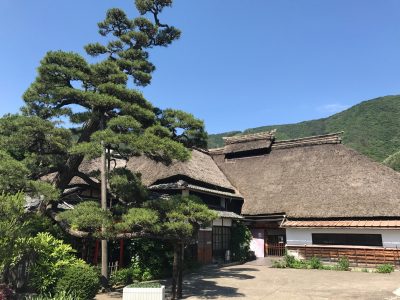
Kaya's historical thatched-roof building
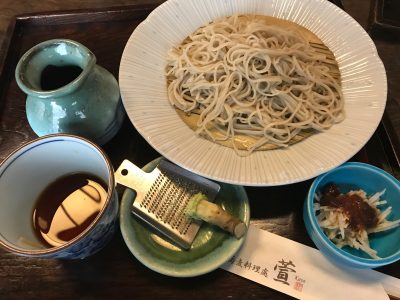
Kaya's authentic soba with an actual wasabi root to grate yourself
Katana-ya in Ueda City (Over 300-year history -- longer than my country! Whatever you do, don't order the super-size. You'll be there for days trying to finish it.),
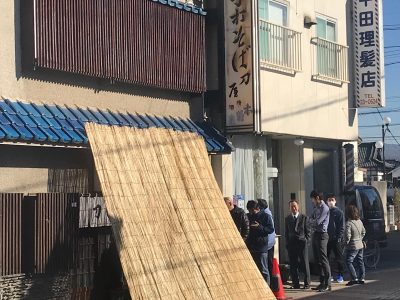
Katana-ya (Lining up to get in)
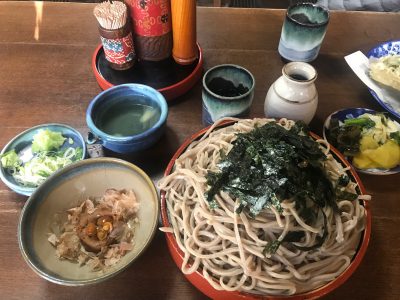
and the venerable Kusabue (various locations). Recently some younger chefs are opening soba restaurants with some creative twists. And some areas have regional specialties such as what they mix the buckwheat with or how the noodles are served. For example, Iiyama City's Tomikura district uses the root of a local plant instead of flour. Pictured below is Kajika-tei in Tomikura. Next to the soba is in the photo is Iiyama's distinctive 'sasa-sushi' -- sushi rice with wild mushrooms wrapped in a bamboo leaf.
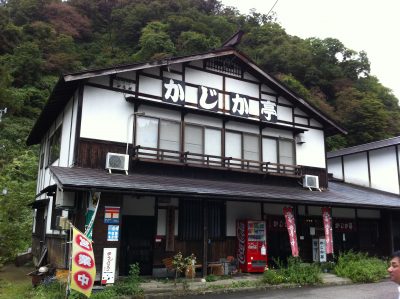
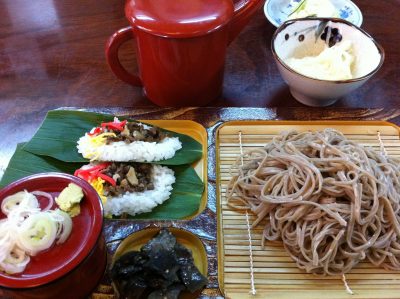
But real soba fans like to drive up the highlands / plateaus (e.g. Togakushi or Kaida Kogen) where the buckwheat is actually grown. There’s something extra special about eating soba near the buckwheat fields, made in the clear mountain air with clean mountain water. We usually go to Yamaguchi-ya in Togakushi. Their dining room has a huge picture window so on a clear day you can enjoy a view of Togakushi Mountain with your soba. (As a bonus, the owner is an actual Toguakure-ryu ninja.)
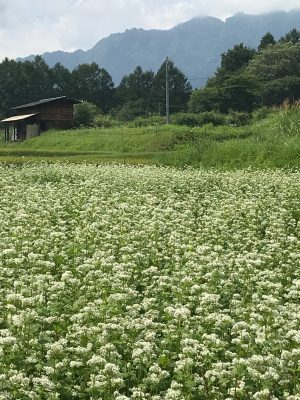
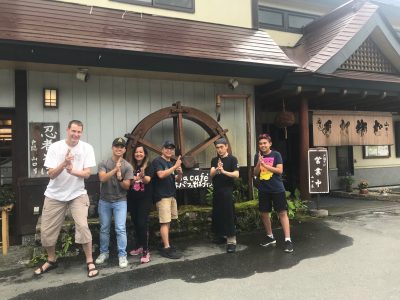
Soba-meister and Togakure-ryu ninja Yamaguchi-san (2nd from right)

Besides soba, Nagano’s soul food is a type of dumpling called oyaki. It is vegetable filling surrounded by a flour shell and fried, steamed, or (traditionally) cooked in coals. Pictured below is Ogawa-no-sho, famous for the latter.

Cooking oyaki dumplings in coals at Ogawa-no-sho by Zenkoji Temple
The best (yes, my bias) is Shichifuku in our town, . While at many touristy places the oyaki is of questionable freshness, at Shichifuku she grills them after you order so they come piping hot (they go great with a cold beer!). Common oyaki fillings are daikon radish, eggplant, and nozawana, a type of turnip green. Shichifuku serves all three of those along with a dessert version filled with sweet purple adzuki beans.
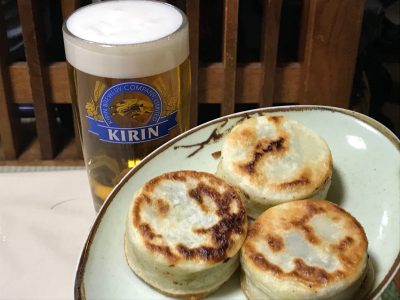
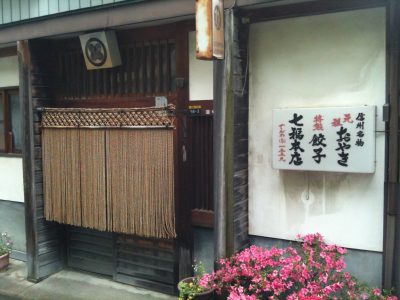
Nagano's Shinshu-Shinmachi district is famous for raising sheep, so mutton is popular, too. Known as Genghis Khan, it is usually grilled at your table. In our town, Kimijima-en is the place to go. Their apple-based dipping sauce is the best!
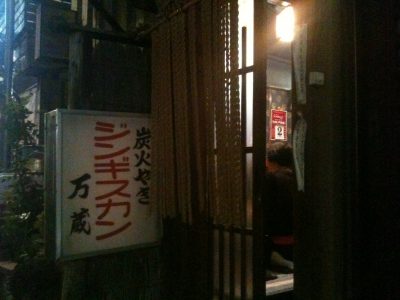
Manzo's original facade. (They recently remodeled and have a new, much fancier entrance.)
For other Nagano ‘delicacies’, this ocean-less prefecture gets creative with sources of protein. Things can get pretty deep. Gotoku-tei near Nagano Station can take care of your craving for bee larvae or stir-fried crickets, as well as the more common ‘basashi’ – horse meat sashimi. Try their gibier dishes, too. Gotoku-tei’s owner Miyashita-san is also a Togakure-ryu ninja.
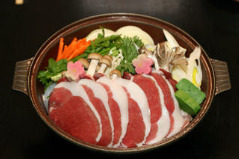
Gibier hotpot at Gotoku-tei.
As for different types of cuisine, as with all of Japan ramen and tonkatsu are well-represented. Eating good ramen is almost a religious experience in Japan. Just in our town, we have an excellent variety of ramen shops. Kame-ya has a good miso ramen, and one of their dishes is served with the toppings making a picture.
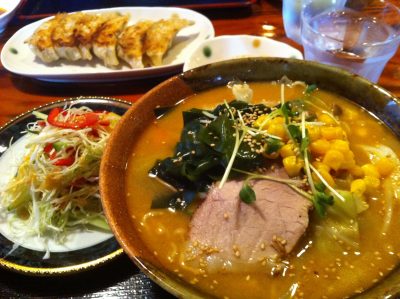
Kame-Ya's miso ramen
Issei’s signature ramen features a “W” (double) soup of both tonkotsu (pork bone) and fish. Yoshiya’s has a soup base made of baby clams (great for people who don’t eat meat).
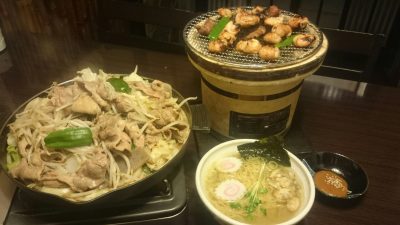
Yoshiya's baby clam ramen (bottom right) with their signature dish, grilled"horumon" (intestines, stomach, etc.)
A younger guy just moved back to town and opened up Ukigumo last October. His specialty is tsukemen with a hot chili powder soup. (If you're not familiar with 'tsukemen', it is basically deconstructed ramen with the soup and noodles served separately. You dip the noodles in the soup to eat.)
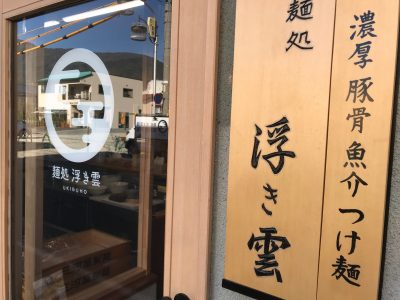
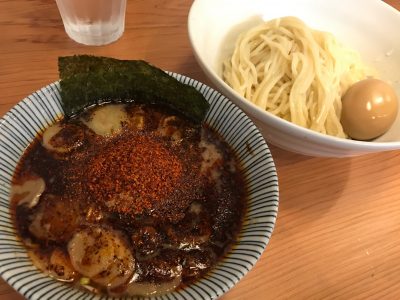
Ukigumo's signature Tsukemen with hot chili powder dipping sauce
For Tonkatsu, the southern Nagano town of Komagane is famous for a version with a sweet sauce called “Sauce-katsu”. One restaurant in our town has a version that is a local legend. Daikokuya’s nin-tare katsu features a ‘tare’ (sauce) with ninniku (garlic). If you like garlic, err, love garlic, this dish is epic.
Our area’s particular specialty is oshibori udon. We take the fat udon noodles and a locally-grown, really, really, really spicy daikon radish and grate the radish and in the radish broth you have to add miso paste to tame it down, then dip udon and eat. Kohaku is especially famous.
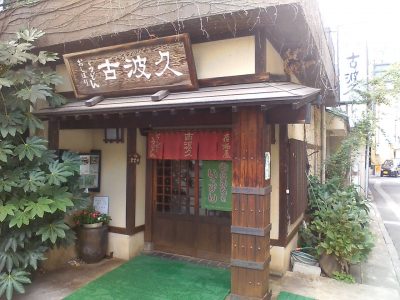
20090827124029
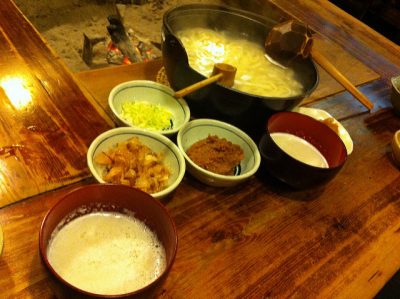
For international, I’m a snob when it comes to Thai, and our town’s My Thai is superb. . Our town also has a fancy French restaurant, Lapis Lazuli but I have to plead ignorance – I’ve never had the money to go there. We have some reputable Italian, but I recently went to one that I want to take my parents to next time they come (it’s that excellent). It’s the restaurant named Vino della Gatta attached to the winery in our neighboring town, Sakaki. So you get excellent Italian and can try out Nagano’s wine.
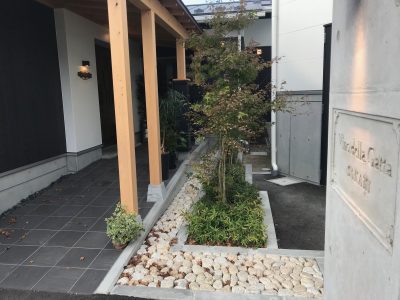
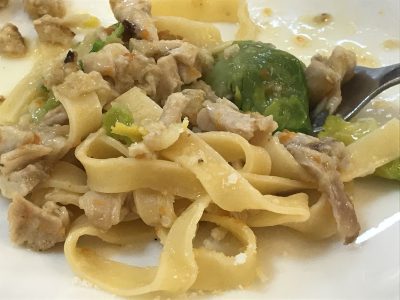
Our town has a new Indian restaurant but when I tried to go they happened to be closed so can’t comment yet.
When in Japan, having a formal kaiseki-style meal at least once is a must. Our chef’s version is fairly creative and fairly reasonable, www.kamesei.jp.
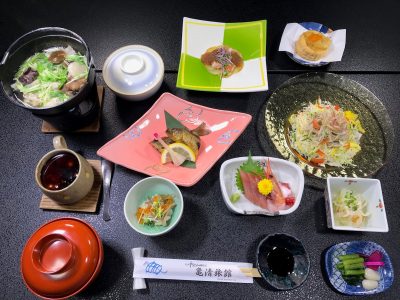
Kaiseki-style dinner by Kamesei Ryokan's Chef Takei.
For vegans, the above-mentioned oyaki and oshibori udon are popular. For gluten-free, some soba shops including the above-mentioned Kaya offer some soba made of 100% buckwheat flour (80/20 or 70/30 is more common) which works as long as you substitute salt for the dipping sauce.
Both our chef’s kaiseki and the above-mentioned Gotoku-tei can handle most dietary restrictions. But when it comes to halal, pork and alcohol-free is possible, but not full halal.
For halal, if you’ve got the money, lapis lazuli, If not, Kebab World in Ueda.
Nagano’s restaurant “scene” is what you make of it. The ski resorts of Hakuba and Nozawa Onsen have increasingly global apres-ski scenes. Matsumoto City has a great bar scene, including some new craft beer breweries (as well as some great bakeries). There are an increasing number of coffee shops and bean roasters popping up for the caffeine crowd.
Here in our town Togura-Kamiyamada, there are 100+ restaurants and not a single national chain. Each one is run by an owner-chef. At many of them, you can sit at the counter and chat with the chef and regular customers (the yakitori restaurant Ushiwaka is especially great for that).
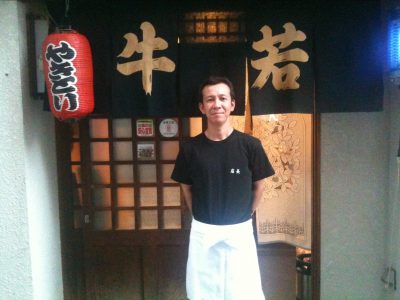
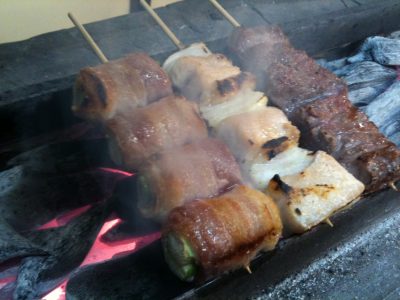
And some of the restaurants are as quirky as their owners, like Rokkatei decorated with European antiques and besides fondue, their signature dish is a tofu steak.
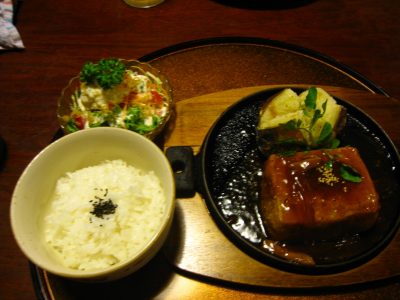
Rokkatei's iconic tofu steak with demi-glace sauce.
For my wife and I, our favorite food 'scene' is to go for a drive out to Nagano's rural by-ways, enjoying the mountain scenery along the way, and stopping at a quaint restaurant before heading to a day-use onsen bath house. One such destination is Cafe Terrace Momo. (As a bonus, their menu is entirely vegan.)
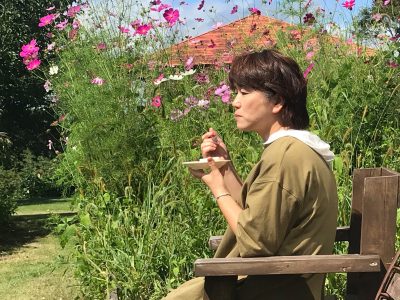
Mari eating dessert in Cafe Momo's garden



